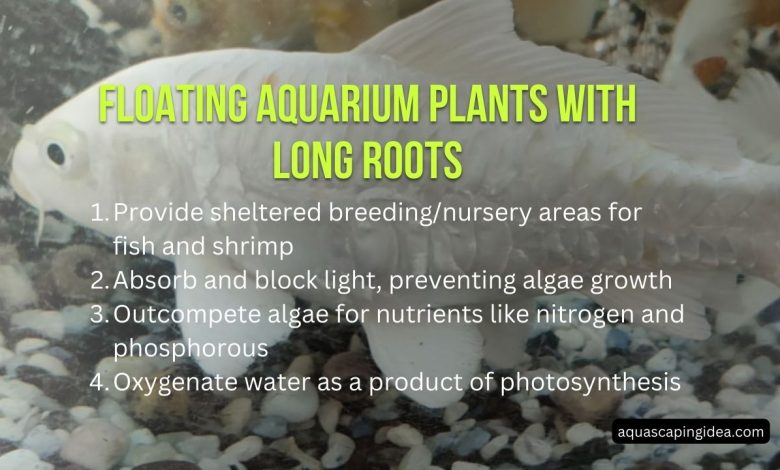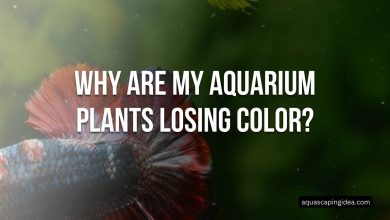Floating Aquarium Plants With Long Roots

The Allure of Floating Plants with Roots While most aquatic plants sink their roots securely into the substrate, some incredibly adaptable species can live their entire lifecycles floating above the gravel or aquasoil. Without any need to embed in the tank bottom, floating plants develop extensive roots that dangle into the water seeking nutrients and minerals. These lush ivory or green root structures look stunning swaying gently in tank currents and provide excellent hiding spots for newborn fry and shy aquatic wildlife. The leafy canopy also blocks bright tank lighting, creating shaded refuge areas for fish across different tank levels.
Popular floating plant choices include:
| Plant | Description |
|---|---|
| Amazon or American swordplants (Echinodorus sp.) | Robust green leaves with roots up to 20 inches long |
| Hornwort (Ceratophyllum demersum) | Feathery green stems with thin dangling roots |
| Anacharis (Egeria densa) | Underwater stems produce fragile white roots |
| Fanwort (Cabomba caroliniana) | Fine-textured leaves with delicate stringy roots |
| Water lettuce (Pistia stratiotes) | Rosettes of fuzzy green leaves and feeding roots |
| Floating moss (Salvinia sp. and Riccia sp.) | Miniature leaves and translucent roots |
Key Benefits of Floating Aquarium Plants
In addition to creating a shimmering surface display, floating plants confer numerous water quality and ecosystem support benefits below the waterline with their lengthy roots including:
- Provide sheltered breeding/nursery areas for fish and shrimp
- Absorb and block light, preventing algae growth
- Outcompete algae for nutrients like nitrogen and phosphorous
- Oxygenate water as a product of photosynthesis
- Filter water by consuming waste organic compounds
- Source of supplemental food for plant-grazing species
Thanks to this impressive suite of functional roles, adding floating plants can support a healthy, stable aquarium environment.
Choosing Plants with Roots for Aquariums
With the dizzying variety of freshwater floating plants available, focus on species with long trailing roots rather than small feeders when selecting plants to add dimension and magic to aquascapes. Ideal starter options include:
Amazon swordplant
A versatile floating plant with sword-shaped leaves capable of growing extremely long roots to over 12 inches. Provides ample shade and shelters fry. Requires medium to high light.
Hornwort
This resilient stem plant floats freely or anchors in substrate. Feathery foliage and thin roots up to 3 inches provide excellent filtration and hiding spots. Thrives in low to high light.
Anacharis
Rapidly growing oxygenating plant with sparse small leaves and a mass of fragile thin roots that excel at absorbing nutrients. Adapts to low light to high light.
Fanwort
The fine-textured cabomba leaves and dense white stringy roots of this floating plant provide lush protective cover for breeding fish. Requires medium to high light.
When choosing rooting floaters, opt for species suited to your aquarium size, lighting, nutrients, and stocking levels. Avoid aggressive root feeders like duckweed unless you have very fast growing fish that can outpace its rapid spread.
Caring for Floating Aquarium Plants
While adaptable and largely self-sufficient, floating plants with long roots still have some basic care requirements to ensure lasting beauty and function:
| Care Requirement | Description |
|---|---|
| Lighting | High intensity lighting between 2 to 4 watts per gallon |
| Fertilization | Liquid fertilizer or substrates releasing nutrients |
| Water Changes | 50-75% weekly water changes to replenish minerals |
| Maintenance | Routinely pruning dead growth and removing debris caught on roots |
| CO2 Supplementation | Providing supplemental CO2 if growth starts to decline |
Reduce lighting duration to 6 hours daily and suspend fertilization if plants start shading out other aquarium flora or show signs of outpacing fish waste nutrients. When plants reach their maximum size, prune back overly long roots or crowded leaf canopies to keep aquatic environments in balance.
Propagating Rooting Floaters
One of the advantages of floating aquarium plants with long roots systems is how easily they propagate from stem and root cuttings:
| Propagation Method | Description |
|---|---|
| Stem cuttings | Cut sections of healthy stems with at least 2-3 nodes and place in substrate or allow to float. Each node will generate a new root system and plant. |
| Root segments | Take 3-4 inch segments of thick roots and anchor under substrate, rocks or driftwood. New baby plants will sprout along the root within days to weeks. |
| Plantlet formation | Many floating plants produce small plantlets complete with mini roots along their roots or on the underside of leaves. These easily detach and float away to take root in substrate. |
With prolific propagation rates, aquarists can quickly generate multiple batches of floating plants with dangling roots to expand displays or share extras with others.
Design Inspiration Using Floating Plants
Thanks to their beautiful cascading roots and leafy canopies, floating plants open up creative options for aquascapes and layouts. Inspiring ways to showcase floating plants include:
| Showcase Idea | Description |
|---|---|
| Island displays | Group multiple plants to form isolated floating biotopes surrounded by open water. Makes for striking focal points. |
| Shading effects | Position long root floaters to cast dappled patterns across rockwork or over delicate carpet plants. Creates depth and contrast. |
| Defined heights | Use shorter rooted floaters in front areas and long trailing species in back to lend perspective. Mimics natural horizons. |
| Flow guides | Place plants with dangling roots to slow and divert the path of water currents across key aquascape areas. Adds dynamism. |
With strategic placement leveraging height, texture, roots and leaf shape, floating plants can guide the eye across impressive aquascapes while providing sanctuary for shy inhabitants below. They bring unequalled magic and mystery to underwater layouts.
FAQs
How long will the roots of floating plants grow?
Depending on available nutrients and species, dangling roots can reach 12 to 24 inches in length before requiring pruning back. Amazon swordplant, anacharis, and hornwort are known for extremely long roots.
Can floating plants shade out other aquarium plants?
Excessive canopy shade from floating plants can starve low-growing aquatic plants of essential light. Routinely prune back dense surface coverage to prevent this and allow light penetration. Target 6 hours of daily exposure for plants.
Is it safe to let roots grow in aquarium filters?
While fascinating to observe, allowing plant roots to invade or block filter intake tubes can cause pump damage or motor burnout. Trim roots as needed for equipment safety and access.
What causes floating plant roots to turn brown or black?
Discoloration and root dieback typically results from lack of nutrients, insufficient iron, low oxygen levels, changes in water parameters, or old plant matter. Improve conditions and prune back affected roots.
Do small or baby fish use floating plant roots?
The extensive dangling roots extending below floating plant canopies provide unparalleled sanctuary spaces for newborn fry, small species, and juvenile fish. Fry flock to roots instinctively.
Conclusion
With their beautiful trailing roots and protective leafy canopies, floating aquarium plants lend fairytale-esque wonder to underwater planted displays. Strategically leverage their cascading root structures, dappled light effects and dense surface coverage when aquascaping to guide the eye across wondrous layouts that provide sanctuary for fish and creatures below. Match floating plant species to aquarium conditions and prune back as needed to balance beauty with ecosystem health for magical results.
Title Suggestion: The Magic of Floating Aquarium Plants: Growing and Showcasing Long Root Systems
Meta Description: Learn how to select, plant, propagate, and creatively feature floating aquarium plants with long roots to impart a sense of wonder and whimsy to freshwater displays.


